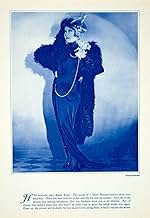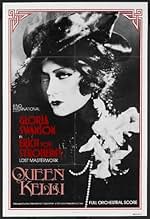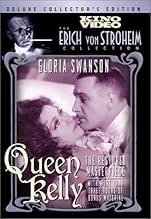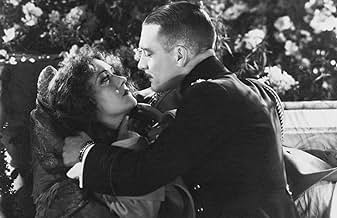IMDb RATING
7.1/10
3.4K
YOUR RATING
A convent girl is abducted and seduced by a prince before being sent off to a brothel in East Africa.A convent girl is abducted and seduced by a prince before being sent off to a brothel in East Africa.A convent girl is abducted and seduced by a prince before being sent off to a brothel in East Africa.
- Awards
- 1 win
Sylvia Ashton
- Kelly's Aunt
- (uncredited)
Wilson Benge
- Prince Wolfram's Valet
- (uncredited)
Sidney Bracey
- Prince Wolfram's Lackey
- (uncredited)
Rae Daggett
- Coughdrops
- (uncredited)
Robert Frazier
- Catholic Priest
- (uncredited)
Florence Gibson
- Kelly's Aunt
- (uncredited)
Madge Hunt
- Mother Superior
- (uncredited)
Tully Marshall
- Jan Vryheid
- (uncredited)
Ann Morgan
- Maid Escorting Kelly to Altar
- (uncredited)
Madame Sul-Te-Wan
- Kali Sana - Aunt's Cook
- (uncredited)
Lucille Van Lent
- Prince Wolfram's Maid
- (uncredited)
Wilhelm von Brincken
- Prince Wolfram's Adjutant
- (uncredited)
Gordon Westcott
- Lackey
- (uncredited)
- Directors
- Writers
- All cast & crew
- Production, box office & more at IMDbPro
Storyline
Did you know
- TriviaA clip from the film appears in Đại Lộ Hoàng Hôn (1950), where Norma Desmond (played by Gloria Swanson), a silent movie star who is planning a comeback, watches one of her former films. Erich von Stroheim plays Max Von Mayerling, Desmond's butler, who serves as projectionist for the film clip. It is later revealed that Max was the silent movie director who discovered Norma Desmond. Director Billy Wilder recalled that it was von Stroheim's idea to use the clip from Queen Kelly (1932) in Đại Lộ Hoàng Hôn (1950), to add realism.
- GoofsThe positions of the two different groups, the troops and the convent girls, are constantly changing in relation to the shrine on Kambach road.
- Quotes
[as Wolfram and Fritz are racing their horses down the street]
Girl 1: Come on, Wild Wolfram! I've bet my nightie on you!
Girl 2: Come on, Fritz! She hasn't GOT a nightie!
- Alternate versionsDirector Erich von Stroheim never completed the film: the ending is made using stills and subtitles. The European version has a different storyline than the American one.
- ConnectionsEdited from Queen Kelly: The Kino Restored International Ending (2011)
Featured review
Scandalous, characteristically grotesque parable of human degradation from director Eric Von Stroheim (Greed). Its original title was to be The Swamp, an appropriate description of the noxious mire in which the characters find themselves engulfed and (in this version anyway) overwhelmed. It is difficult to review this film given that approximately a third or so remains extant. The film was made over the final months of 1928 and early 1929, but production was halted at the request of star Gloria Swanson, whose production company was partly involved in its financing. The complete film was planned at some five hours running time. What remains is some seventy minutes of a complete first act and a lengthy fragment of a later bit of action set in East Africa which is included in the most recent restoration print (1985), along with production stills and intertitles which explain the main thrust of the missing pieces and the remainder of the story. As such what we have here is a work in progress, a segment of a complete work which makes any judgment upon its overall thematic coherence, direction, and execution speculative at best, moot at worst. Nonetheless students of film and film buffs in general will not want to miss an opportunity to see this fascinating bit of late twenties Hollywood history, not least of all because it was the last studio project for the much-maligned Von Stroheim. Having sat by and watched his masterpiece Greed torn apart by financiers and having the plug pulled on this one by none less than his own leading lady, he can't but have felt betrayed by the enchroacing commercialism in a medium of which he was proving a consummate artist. It is little wonder that Billy Wilder would cast him with gleeful sadism as the devoted butler to Swanson's decomposing harridan in Sunset Boulevard with all due historical irony, and perhaps it it even more fitting that Von Stroheim handled himself which such composure and dignity in the role.
Fortunately, Queen Kelly was shot in sequence, so the first seventy minutes or so is a coherent and well balanced bit of outrageous social hysteria. Set in a fictitious European kingdom of some sort, the events concern the pending engagement of mad Queen Seena Owen with the less than willing aristocratic playboy Walter Bryon, who prefers riding carriage horses to the hoots and hollers of female courtiers who bet their underwear on the outcome of the race. While the Queen strolls around her palace naked (strategically covered by well-placed objects, bits of scenery and a long-haired white cat), her eyes burning with paranoia and jealousy, Bryon encounters a young (Irish) convent girl (Swanson) with whom he falls instantly in love. Their meeting takes place one day whilst the prince is on manoeuvres with his regiment and the girl is out walking with her classmates under the supervision of nuns. Noticing that her bloomers have fallen around her ankles, the prince laughs and taunts her. Eventually seeing the funny side of it, the young lady returns his flirting glances, much to the shock of her protectors. The prince later conspires to meet her again by starting a fire in the convent (!), and 'rescues' her for an intimate dinner at the palace where Swanson is memorably framed by the burning flames of a roaring fire as Bryon devours and undresses her with his eyes.
The film exudes raw sexuality in almost every scene, concentrating on the hypocritical schizm between desire and propriety. Though romance and love seem to be in question, and Bryon makes an impassioned plea for his love for the young girl, there are few wholesome emotions on view here. From (literally) fire-fuelled lust and arrogant recklessness to enraged passion and sexual jealousy, the film teems with vileness. The world of the noble classes is opulent and packed with beautiful visual detail in typical Von Stroheim fashion, but is empty and evil in a way which makes all that follows an ever-darker descent into the nether regions of human degradation, climaxing with an extraordinary confrontation between Swanson and Owen where the Queen literally horse-whips her rival and drives her from the palace. In the version of the film released in 1931, it ends shortly after with Swanson throwing herself into the river and drowning, a fittingly melodramatic and damning end to a damned affair.
However, this was, as mentioned, merely the first act in a much longer and more layered study of the process of self-discovery and self-realisation, and intertitles explain that rather than perishing here, the girl is rescued and embarks on a wholly different adventure which takes her to German East Africa where her dying aunt runs a brothel. The story takes an increasingly bizarre turn as the old lady forces the girl into marriage with a loathsome, lecherous, beast of a man (played with festering glee by Tully Marshall). The restored footage (discovered in the 1960s) climaxes with an even more literal and disturbing rendition of the marriage/death scene from Greed, where literally over the dying body of her aunt, Swanson is married to Marshall, who is photographed to appear like a huge, white spider (an impression aided by the fact that he moves on wooden crutches and creeps like a predator sneaking up on prey) with soulless eyes and a body which seems to be decaying from inside, only gradually reaching the visible extremities as we meet him. Unfortunately, the footage ends at this point, and only scattered stills and intertitles briefly summarise what seems to have been a variant on the Marquis de Sade's Justine, where only by acknowledging and embracing one's basest nature can you rise and triumph over your enemies. Alas, without the benefit of the actual film to discuss, we can't really judge how successful a moral message this might have been.
As is, Queen Kelly is never less than fascinating. Von Stroheim's characteristic concerns are present, as is his penchant for grotesquerie and his explicit contempt for society, hypocrisy, and repression. It is wonderfully photographed by Gordon Pollock and Paul Ivano to enhance the richly venal world in which it is set. The original score by Adolph Tandler becomes repetitive, but this is as much because it has been added to the later sequences following its (re)discovery, and it, one presumes, like the film, is incomplete. It is certainly well worth seeing, though any conclusions as to its overall qualities are obviously tentative, as is any judgment of its potential contribution either to cinema on the whole, or a moral, parablistic cinema in particular.
Fortunately, Queen Kelly was shot in sequence, so the first seventy minutes or so is a coherent and well balanced bit of outrageous social hysteria. Set in a fictitious European kingdom of some sort, the events concern the pending engagement of mad Queen Seena Owen with the less than willing aristocratic playboy Walter Bryon, who prefers riding carriage horses to the hoots and hollers of female courtiers who bet their underwear on the outcome of the race. While the Queen strolls around her palace naked (strategically covered by well-placed objects, bits of scenery and a long-haired white cat), her eyes burning with paranoia and jealousy, Bryon encounters a young (Irish) convent girl (Swanson) with whom he falls instantly in love. Their meeting takes place one day whilst the prince is on manoeuvres with his regiment and the girl is out walking with her classmates under the supervision of nuns. Noticing that her bloomers have fallen around her ankles, the prince laughs and taunts her. Eventually seeing the funny side of it, the young lady returns his flirting glances, much to the shock of her protectors. The prince later conspires to meet her again by starting a fire in the convent (!), and 'rescues' her for an intimate dinner at the palace where Swanson is memorably framed by the burning flames of a roaring fire as Bryon devours and undresses her with his eyes.
The film exudes raw sexuality in almost every scene, concentrating on the hypocritical schizm between desire and propriety. Though romance and love seem to be in question, and Bryon makes an impassioned plea for his love for the young girl, there are few wholesome emotions on view here. From (literally) fire-fuelled lust and arrogant recklessness to enraged passion and sexual jealousy, the film teems with vileness. The world of the noble classes is opulent and packed with beautiful visual detail in typical Von Stroheim fashion, but is empty and evil in a way which makes all that follows an ever-darker descent into the nether regions of human degradation, climaxing with an extraordinary confrontation between Swanson and Owen where the Queen literally horse-whips her rival and drives her from the palace. In the version of the film released in 1931, it ends shortly after with Swanson throwing herself into the river and drowning, a fittingly melodramatic and damning end to a damned affair.
However, this was, as mentioned, merely the first act in a much longer and more layered study of the process of self-discovery and self-realisation, and intertitles explain that rather than perishing here, the girl is rescued and embarks on a wholly different adventure which takes her to German East Africa where her dying aunt runs a brothel. The story takes an increasingly bizarre turn as the old lady forces the girl into marriage with a loathsome, lecherous, beast of a man (played with festering glee by Tully Marshall). The restored footage (discovered in the 1960s) climaxes with an even more literal and disturbing rendition of the marriage/death scene from Greed, where literally over the dying body of her aunt, Swanson is married to Marshall, who is photographed to appear like a huge, white spider (an impression aided by the fact that he moves on wooden crutches and creeps like a predator sneaking up on prey) with soulless eyes and a body which seems to be decaying from inside, only gradually reaching the visible extremities as we meet him. Unfortunately, the footage ends at this point, and only scattered stills and intertitles briefly summarise what seems to have been a variant on the Marquis de Sade's Justine, where only by acknowledging and embracing one's basest nature can you rise and triumph over your enemies. Alas, without the benefit of the actual film to discuss, we can't really judge how successful a moral message this might have been.
As is, Queen Kelly is never less than fascinating. Von Stroheim's characteristic concerns are present, as is his penchant for grotesquerie and his explicit contempt for society, hypocrisy, and repression. It is wonderfully photographed by Gordon Pollock and Paul Ivano to enhance the richly venal world in which it is set. The original score by Adolph Tandler becomes repetitive, but this is as much because it has been added to the later sequences following its (re)discovery, and it, one presumes, like the film, is incomplete. It is certainly well worth seeing, though any conclusions as to its overall qualities are obviously tentative, as is any judgment of its potential contribution either to cinema on the whole, or a moral, parablistic cinema in particular.
- How long is Queen Kelly?Powered by Alexa
Details
Box office
- Budget
- $800,000 (estimated)
- Runtime1 hour 41 minutes
- Color
- Sound mix
- Aspect ratio
- 1.33 : 1
Contribute to this page
Suggest an edit or add missing content
































